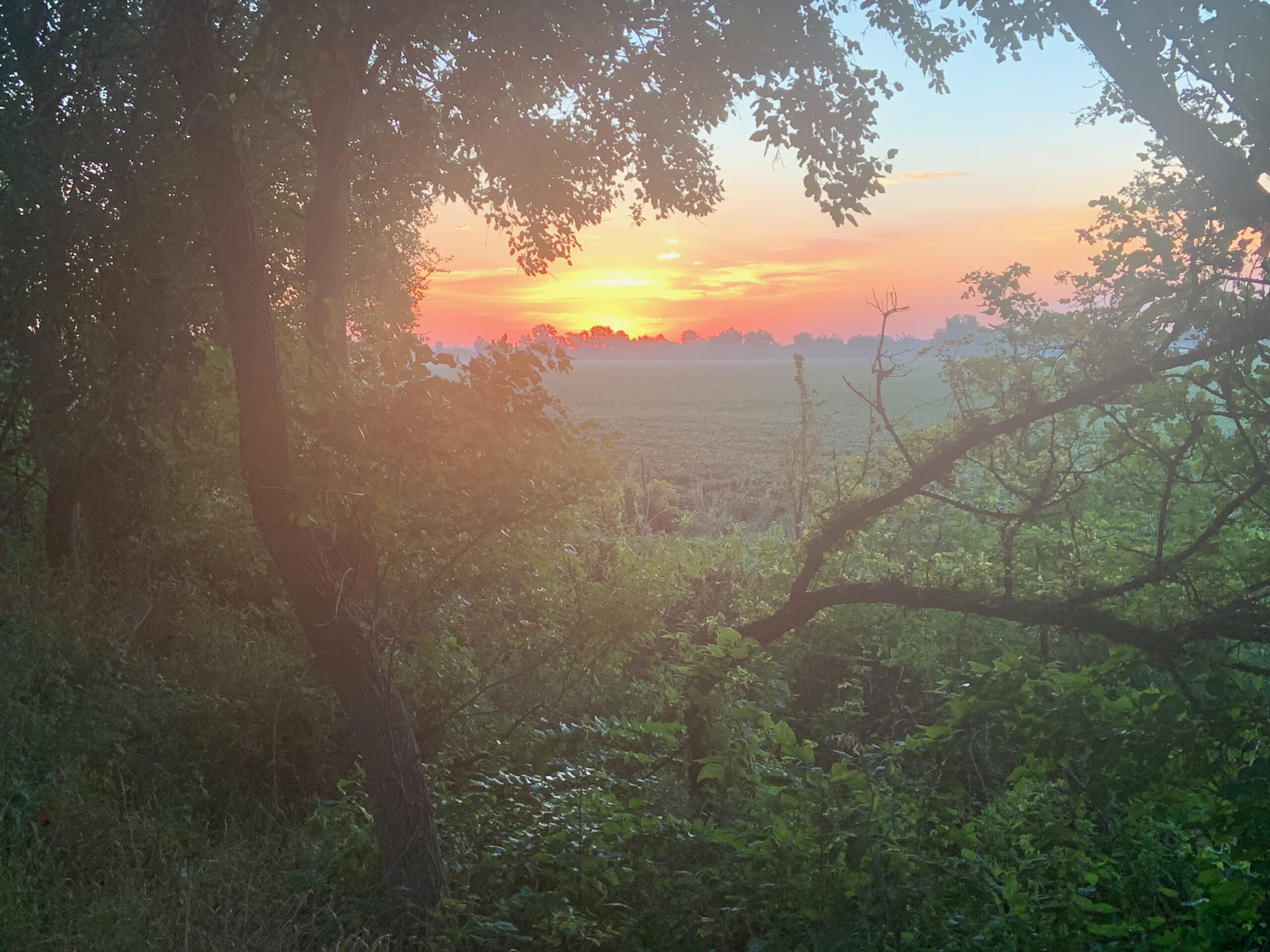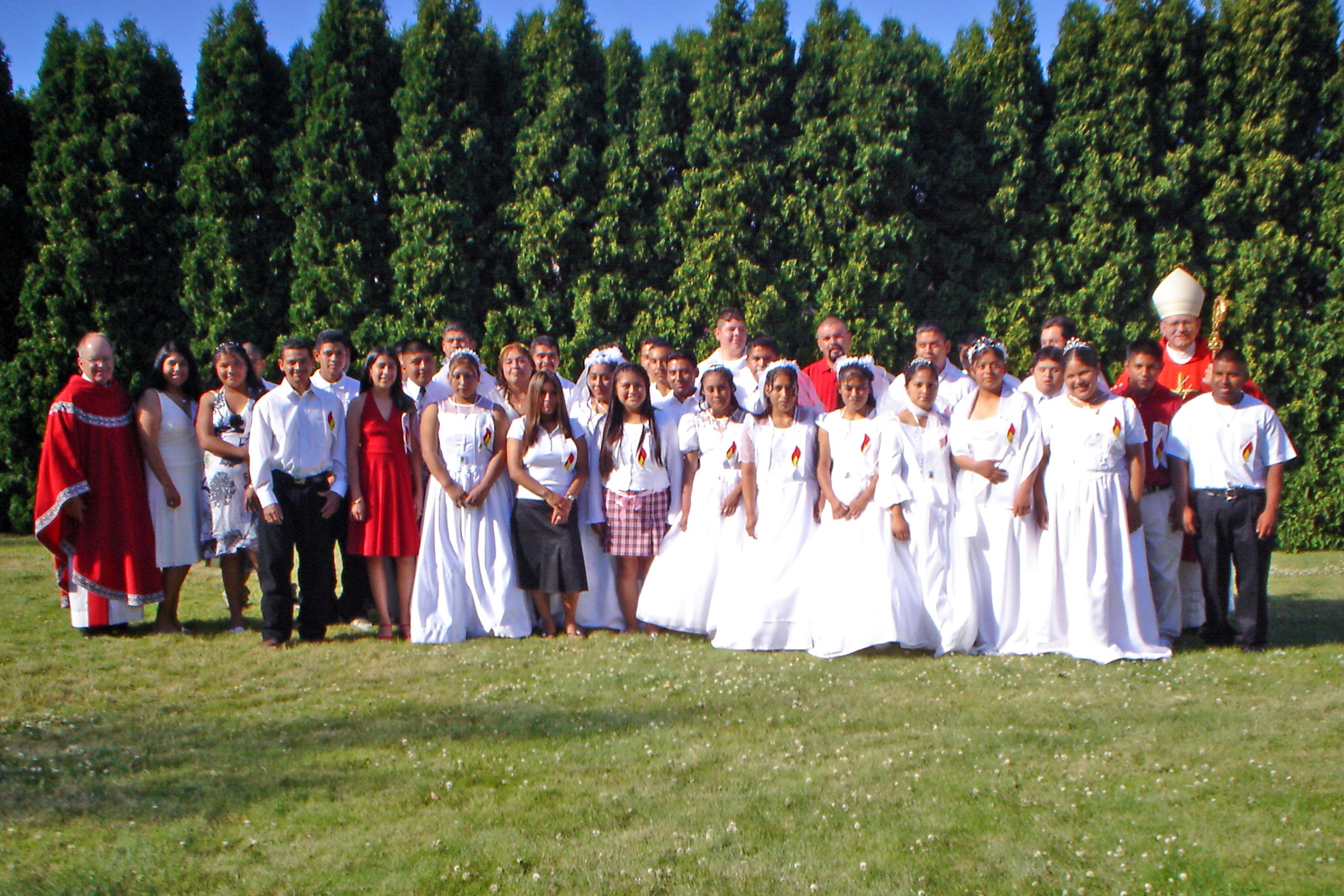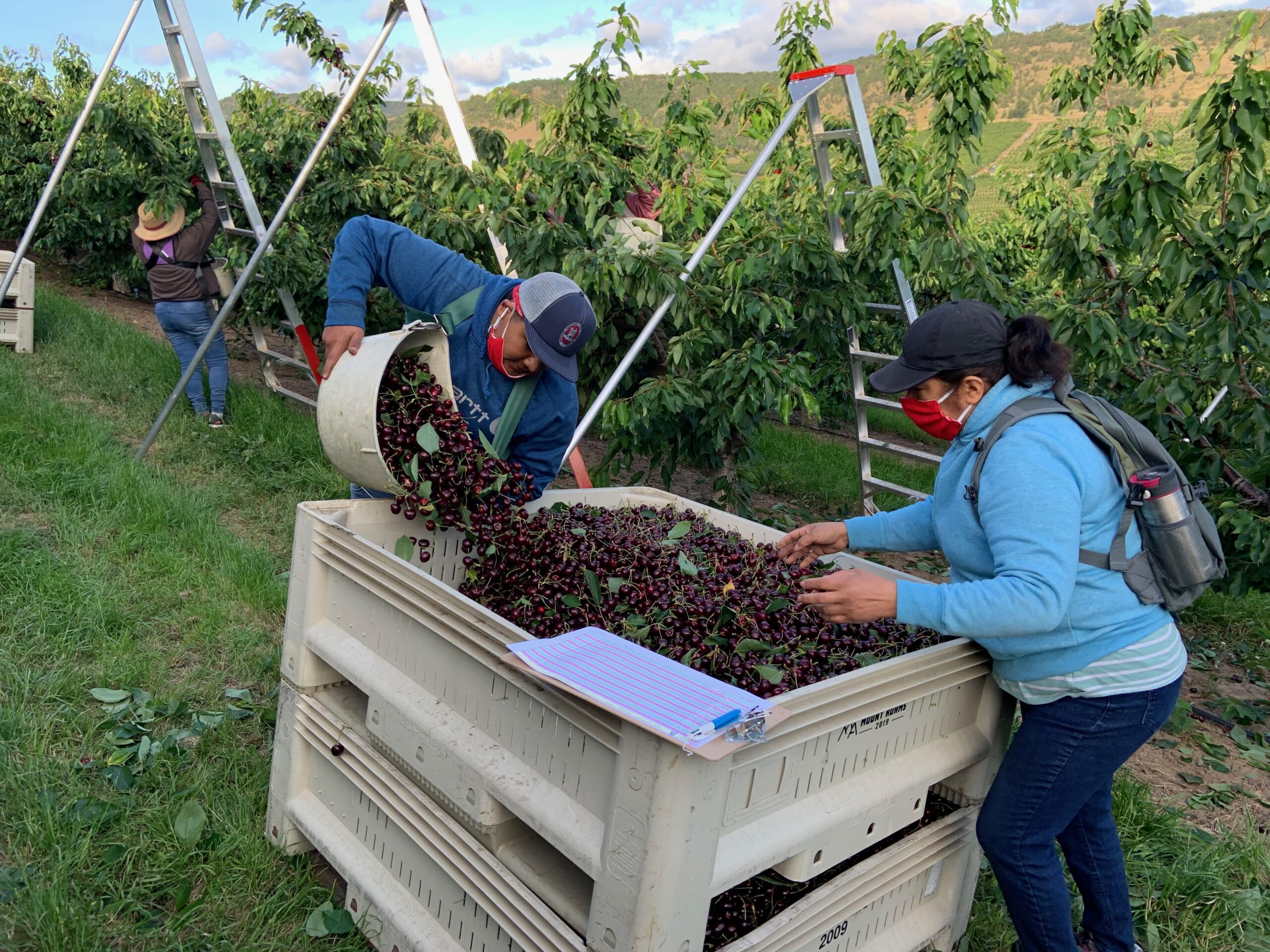St. John Neumann, C.SS.R. – San Juan Neumann
El primer redentorista estadounidense
Los Redentoristas enviaron misioneros a los Estados Unidos en 1832 en respuesta a la solicitud de los obispos estadounidenses. Su trabajo inicial estuve con los nativos americanos. Como hablaban alemán, los obispos los buscaron para trabajar con inmigrantes de habla alemán en las ciudades de Nueva York y Filadelfia. A menudo iban a las comunidades agrícolas rurales que tenían muchos inmigrantes de habla alemán. Es cierto que el P. John Neumann buscó formas en que los Redentoristas pudieran servir a su gente en la zona rural de Nueva York. A medida que se hicieron sus amigos, reconoció que mientras estaba atendiendo la gran necesidad de los inmigrantes en las comunidades rurales, anhelaba tener una comunidad de misioneros para compartir las alegrías de la misión, pero también tener una comunidad de apoyo en la oración y en reconociendo la soledad de vivir y trabajar solo.
En 1840, solicitó ingresar a los Redentoristas. Fue la primera persona en Estados Unidos en pedir la entrada a la comunidad. Su hermano Wenceslao lo siguió a Pittsburg y pidió ser hermano. La formación de Padre Neumann como novicio fue única. En lugar de un período tranquilo de reflexión y oración comunitaria, se encontró repetidamente trasladado de fundación en fundación, de ciudad en ciudad, a medida que surgía la necesidad de pastores interinos para las congregaciones alemanas. Un cronista redentorista informó:
“El primer novicio de nuestra provincia americana no disfrutó de las ventajas que se encuentran en la instrucción regular y la disciplina cuidadosa de un noviciado bien regulado. Se le encomendaron deberes que, por lo general, recaían únicamente en un religioso profeso; sin embargo, se distinguió por la fiel observancia de las reglas, el amor sincero por la Congregación y la práctica de eminentes virtudes”.
Profesó votos como redentorista en enero de 1842. Después de su primera asignación en Maryland City, pasó a ser superior de la fundación redentorista en Pittsburg. Construyó una nueva iglesia para la parroquia de Santa Filomena, y mientras estaba allí escribió dos catecismos para enseñar la fe a los niños. Después de solo cinco años como redentorista, se convirtió en el superior de los redentoristas de los Estados Unidos.
Guio a la Congregación a través de un tiempo de expansión de ministerios para los Redentoristas en América. Trajo a las Hermanas de la Escuela de Notre Dame para que se hicieran cargo de las escuelas redentoristas en Estados Unidos. En el sitio web del santuario de San Juan Neumann, uno de sus logros como Superior de los Redentoristas fue su papel en salvar a las Hermanas Oblatas de la Providencia de la disolución.
“Las Hermanas Oblatas de la Providencia, un grupo de religiosas negras fue salvado de la disolución por Juan Neumann en Baltimore en 1847. La Comunidad había sido fundada veinte años antes para proporcionar educación a los hijos de esclavos. Su director espiritual había muerto, varios de las Hermanas se habían trasladado a otra parte, y el arzobispo de Baltimore sintió que el grupo debía disolverse. Como confesor y consejero de las Hermanas, Neumann intercedió y obtuvo un indulto. Asignó a un sacerdote joven con mucho celo como director de la Comunidad. Las Oblatas experimentaron nueva vida. Su escuela creció en tamaño y el número de Hermanas aumentó. Dirigen escuelas, guarderías y centros de catequesis “.
En 1852, fue nombrado obispo de Filadelfia. Era conocido por sus esfuerzos para formar escuelas católicas, especialmente como una forma para que los inmigrantes se integran en la vida estadounidense. Fue un sacerdote humilde, reconocido por su virtud, su consejo y su compromiso con toda la gente de su diócesis. Como sacerdote inmigrante, su ministerio inicial se centró en los inmigrantes de habla alemán, pero su don para los idiomas y su propia experiencia en inmigración lo convirtieron en una parte fundamental para ayudar a los inmigrantes a integrarse en la sociedad estadounidense. Él mismo se convirtió en ciudadano estadounidense mientras se desempeñaba como Superior de los Redentoristas.
Identificación personal con San Juan Neumann
Al reflexionar sobre su vida, él es un modelo para el ministerio de inmigrantes con una preocupación especial por los trabajadores rurales. Su énfasis en la predicación de la Palabra y en llevar a los niños y jóvenes a los sacramentos me recuerda tanto a San Alfonso y los escritos recientes del Papa Francisco. Respondió a todas las necesidades de los pobres, pero se sintió más energizado al enseñar a los niños y llevarlos a la iglesia para recibir los sacramentos.
Fue a todos los inmigrantes, y al final de su vida estudió gaélico para poder servir mejor a los inmigrantes irlandeses. Mientras que los ricos y los poderosos se avergonzaban de que él no mostrara sus aires, los pobres y los inmigrantes lo consideraban su santo. Que San Juan Neumann sea una inspiración para todos los inmigrantes, pero también un signo para todos aquellos que han olvidado que esta nación fue formada por inmigrantes. Que Dios bendiga a América en el ejemplo de San Juan Neumann, C.Ss.R.
(Mañana: Los Reyes Magos – Wise Men)
The first American Redemptorist
The Redemptorists sent missionaries to the United States in 1832 in response to the request of American bishops. Their early work was with native Americans. Since they spoke German, bishops sought them out to work with German speaking immigrants in cities of New York and Philadelphia. They often went out to the rural agricultural communities that had many German speaking immigrants. It is certain that Fr. John Neumann looked for ways that the Redemptorists could help in serving his people in rural New York. As they became his friends, he recognized that while he was serving the great need of the immigrants in rural communities, he longed for having a community of missionaries to share the joys of the mission, but also to have a supportive community in prayer and in recognizing the loneliness of living and working alone.
In 1840, he applied to enter the Redemptorists. He was the first person in America to ask for entrance into the community. His brother Wenceslaus followed him to Pittsburg and asked to become a brother. Fr. John Neumann’s formation as a novice was unique. Instead of a quiet period of reflection and community prayer, he found himself repeatedly transferred from foundation to foundation, city to city, as need arose for interim pastors for German congregations. A Redemptorist chronicler reported:
“The first novice of our American Province did not enjoy the advantages found in the regular instruction and careful discipline of a well-regulated novitiate. He was entrusted with duties which usually fell to the charge of a professed religious only; nevertheless, he distinguished himself by a faithful observance of rules, unaffected love for the Congregation, and the practice of eminent virtues.”
He professed vows as a Redemptorist in January 1842. After his first assignment at Maryland City, he went to be superior of the Redemptorist foundation in Pittsburg. He built a new church for St. Philomena parish, and while there wrote two catechisms for teaching the faith to children. After only five years as a Redemptorist he became the Superior of the Redemptorists of the United States.
He guided the Congregation through a time of expansion of ministries for the Redemptorists in America. He brought the School Sisters of Notre Dame to take charge of Redemptorist schools in America. In the website for the shrine of St. John Neumann, one of his accomplishments while Superior of the Redemptorists was his role in saving the Oblate Sisters of Providence from dissolution.
“The Oblate Sisters of Providence, a group of black women religious, was saved from dissolution by John Neumann in Baltimore in 1847. The Community had been founded twenty years before to provide education for children of slaves. Its spiritual director had died, a number of Sisters had moved elsewhere, and the Archbishop of Baltimore felt the group should be disbanded. As confessor and adviser to the Sisters, Neumann interceded and won a reprieve. He assigned a zealous young priest to be director of the Community. It took on new life; its school grew in size, and the number of Sisters increased. They conduct schools, day nurseries and catechetical centers.”
In 1852, he was named the bishop of Philadelphia. He was known for his efforts to form Catholic schools, especially as a way for immigrants to become incorporated into the fabric of American life. He was a humble priest, recognized for his virtue, his counsel and his commitment to all the people of his diocese. As an immigrant priest, his early ministry focused on the German speaking immigrants, but his gift for languages and his own immigration experienced made him an instrumental part of helping immigrants to become integrated into American society. He himself became a U.S. citizen while he served as Superior of the Redemptorists.
Personal identification with St. John Neumann
As I reflect on his life, he is a model for immigrant ministry with a special concern for the rural workers. His emphasis on preaching the Word and on bringing children and youth to the sacraments reminds me both of St. Alphonsus and the recent writings of Pope Francis. He responded to all the needs of the poor, but was most energized by teaching children and bringing them to the church to receive the sacraments.
He went to all immigrants, and at the end of his life studied Gaelic so that he could better serve the Irish immigrants. While the rich and the powerful were embarrassed that he did not carry on their airs, the poor and immigrant found him to be their saint. May St. John Neumann be an inspiration to all immigrants, but also may he be a sign to all those who have forgotten that this nation was formed by immigrants. May God bless America in the example of St. John Neumann, C.Ss.R.
(Tomorrow: Los Reyes Magos – Wise Men)





